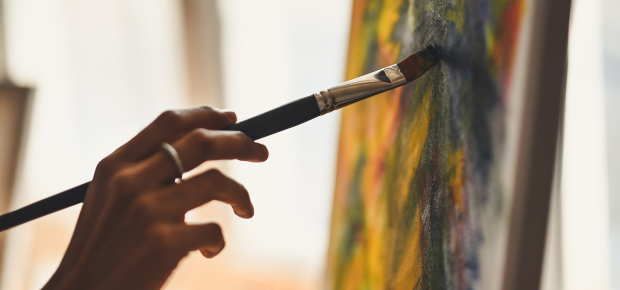
Art therapy uses creative expression to support emotional healing. Whether it's trauma, anxiety or simply stress, many people find it hard to talk about their feelings—but they might be able to draw them.
This blog takes you through the path to becoming a certified art therapist in Australia, and why it’s one of the most meaningful and rewarding careers in the mental health space.
What does an art therapist do?
Art therapists work with clients of all ages to explore thoughts and emotions through art-making. Rather than teaching art, they guide people through a creative process that can uncover subconscious struggles, foster resilience and support recovery.
They may work in:
-
Hospitals and mental health facilities
-
Schools and community centres
-
Aged care and palliative care services
-
Prisons or rehabilitation programs
-
Private practices
Art therapists support people dealing with anxiety, grief, trauma, chronic illness, addiction or neurodivergence. They use materials like paint, charcoal, sculpture or collage—and it’s not about skill, it’s about expression.
Skills and qualities that make a good art therapist
You don’t have to be an artist. But you do need to be:
-
Empathetic: You’ll often be working with vulnerable clients
-
Patient and gentle: Progress in therapy is rarely linear
-
Creative: You’ll need to adapt your tools and methods to each individual
-
A good listener: Much of the healing comes from what’s unspoken
-
Culturally aware: Clients will come from diverse backgrounds
-
Flexible: There’s no one-size-fits-all in art therapy
Being an art therapist means holding space for others while they process deep and often painful experiences. It takes care, compassion and strong boundaries.
Wondering how art therapy supports people living with depression? Art therapy for depression explores its benefits and real-world impact.
Education requirements in Australia
To become a registered art therapist in Australia, you typically need:
-
A relevant undergraduate degree: Psychology, counselling, visual arts, social work or education are good starting points.
-
A postgraduate qualification in art therapy: Most people go on to complete a Master’s degree in Art Therapy from an accredited institution.
-
Supervised clinical hours: You’ll need to complete practicum placements or internships as part of your training.
These qualifications must meet the standards of the Australian Qualifications Framework (AQF) and be recognised by ANZACATA, the peak professional body for creative arts therapists in Australia, New Zealand and the Asia-Pacific region, the peak professional body for creative arts therapists in Australia, New Zealand and the Asia-Pacific region.
Clinical experience and supervision
Supervised placements are a core part of becoming an art therapist. This is where theory meets practice—you’ll work directly with clients, develop real-world skills and learn how to adapt your sessions to different needs.
Supervision also ensures ethical, effective therapy. You’ll receive feedback, explore challenges, and reflect on your own emotional responses to clients. It’s essential for developing your voice as a therapist.
A 4-step guide to becoming an art therapist
1. Build your people skills early
Empathy, communication and self-awareness are your biggest assets. If you’re naturally attuned to how others feel, you’re already on your way.
2. Choose the right education path
Start with a degree in psychology, counselling or visual arts, then complete a recognised Master’s in Art Therapy or equivalent postgraduate course.
3. Complete your clinical hours
Placements give you practical experience working with real clients under supervision. This is where you start to develop your therapeutic style.
4. Join a professional organisation
Once qualified, apply for registration with ANZACATA. This boosts your credibility and keeps you connected to a supportive professional community.
These steps are just the beginning. Now let’s take a look at what the research says about the real-world impact of art therapy.
Salary and job outlook
According to Seek, art therapists in Australia earn between $67,000 and $95,000 annually, depending on experience and setting. The job outlook is strong, with expected growth of 14.8% through 2024.
Demand is rising across hospitals, schools and community services. Therapists with specialist experience (like working with trauma, children or aged care clients) may have even more opportunities.
Wrapping it up
Thinking of turning your love for creativity and helping others into a career? Art therapy could be your perfect fit.
If you’ve ever seen how a painting, sculpture or even a few scribbles can bring up deep emotion, you’ll understand the power of art therapy.
Becoming an art therapist means guiding others through their inner worlds—not with words, but with brushes, colour and safe, supported exploration.
It’s not just a career. It’s a calling.
Start your journey today by exploring available courses on the Natural Therapy Pages.




